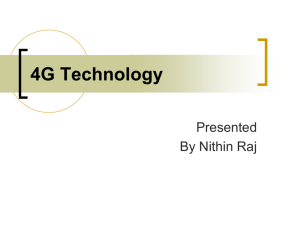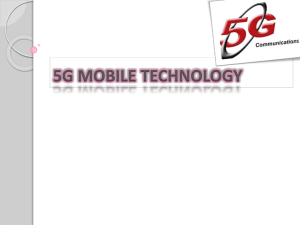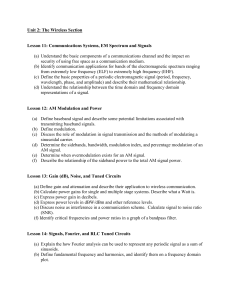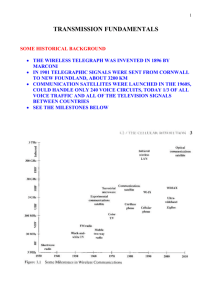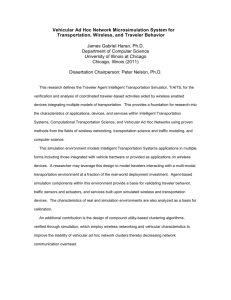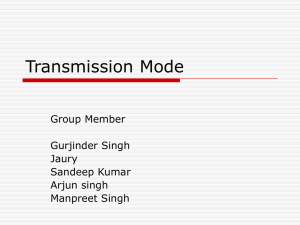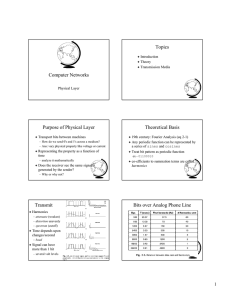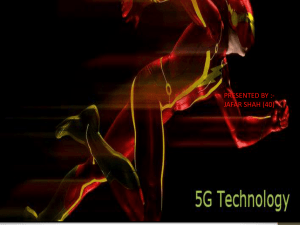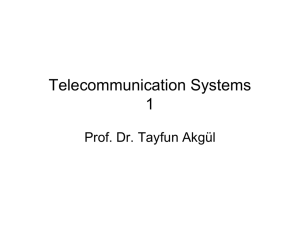4G Technology
advertisement
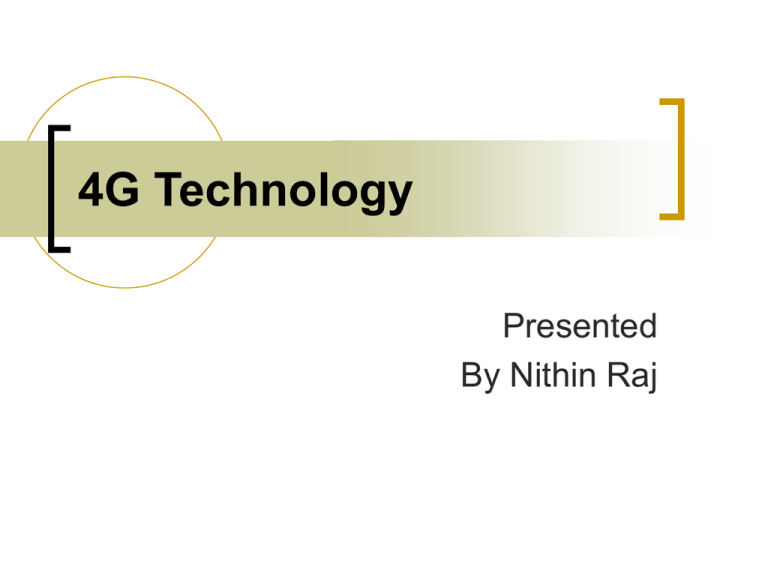
4G Technology Presented By Nithin Raj 4G Definition 4G is not one defined technology or standard, but rather a collection of technologies at creating fully packetswitched networks optimized for data. 4G Networks are projected to provide speed of 100Mbps while moving and 1Gbps while stationary. 0G (Zero Generation Mobile System) At the end of the 1940’s, the first radio telephone service was introduced, and was designed to users in cars to the public land-line based telephone network. In the 1960’s, a system launched by Bell Systems, called, Improved Mobile Telephone Service (IMTS), brought quite a few improvements such as direct dialing and more bandwidth. The very first analog systems were based upon IMTS and were created in the late 60s and early 70s. 1G Technology 1G refers to the first-generation of wireless telephone technology was developed in 1970’s. 1G had two major improvements: the invention of the microprocessor the digital transform of the control link between the phone and the cell site. Analog signal 2G Technology Around 1980’s Better quality & capacity - More people could use there phones at the same time Digital Signals – consist of 0’s & 1’s Previous Technology - 2G Digital – consist of 0’s and 1’s Digital signal: 1.Low level, 2.High level, 3.Rising edge and 4.Falling edge Previous Technology - 2G Digital data can be compressed and multiplexed much more effectively than analog voice encodings Multiplexing -multiple analog message signals or digital data streams are combined into one signal For 1 and 2G standards, bandwidth maximum is 9.6 Kbit/sec, (I.E) approximately 6 times slower than an ISDN Previous Technology - 2G Allows for lower powered radio signals that require less battery Power–CODEC introduction -program that encodes and decodes digital data stream or signal Translates data from digital to analog and vice versa Previous Technology - 2G Advantages in Previous Technology - 2G The digital voice encoding allows digital error checking increase sound quality lowers the noise level Going all-digital allowed for the introduction of digital data transfer SMS –“short message service” E-mail Disadvantages in Previous Technology - 2G Cell towers had a limited coverage area Jagged Decay curve Abrupt dropped calls Analog –gradual sound reduction “Spotty” coverage 3G Technology Large capacity and broadband capabilities Allows the transmission of 384kbps for mobile systems and up to 2Mbps Increased spectrum efficiency –5Mhz A greater number of users that can be simultaneously supported by a radio frequency bandwidth High data rates at lower incremental cost than 2G–Global roaming Previous Technology - 3G CDMA –Code Division Multiple Access Form of multiplexing Does not divide up the channel by time or frequency Encodes data with a special code associated with each channel Code Division Multiple Access Types of Multiplexing FDMA – Frequency Division Multiple Access Each phone call is allocated one frequency for the entire duration of the call Types of Multiplexing TDMA - Time Division Multiple Access Each phone call is allocated a spot in the frequency for a small amount of time, and "takes turns" being transmitted Types of Multiplexing CDMA - Code Division Multiple Access Each phone call is uniquely encoded and transmitted across the entire spectrum, in a manner known as spread spectrum transmission Reasons for New Research Even though 3G has successfully been introduced to mobile users, there are some issues that are debated by 3G providers and users. High input fees for the 3G service licenses Great differences in the licensing terms 3G phones are expensive Fourth Generation What is 4G? Fourth Generation Technology Faster and more reliable 100 Mb/s Lower cost than previous generations Multi-standard wireless system Bluetooth, Wired, Wireless Ad Hoc Networking IPv6 Core OFDM used instead of CDMA Potentially IEEE standard 802.11n Most information is proprietary Communications Architecture Broadcast layer: fix access points, (i.e.) cell tower connected by fiber, microwave, or satellite (ISP) Ad-hoc/hot-spot layer: wireless LANs (i.e. internet at Starbuck’s) Communications Architecture Personal Layer Gateway: Info-Sensor layer: devices that connect to upper layers; cell phone, fax, voice, data modem, MP3 players, PDAs environmental sensors Fiber-optic wire layer: high speed subterranean labyrinth of fiber optic cables and repeaters Ad Hoc Networks Spontaneous self organization of networks of devices Not necessarily connected to internet 4G will create hybrid wireless networks using Ad Hoc networks Form of mesh networking–Very reliable Enhance Mobile Gaming Experience enhance wireless capabilities that deliver mobile gaming interaction with less than five seconds Play online multi player games while traveling at high speeds or sitting outside Broadband access in Remote location 4G will provide a wireless alternative for broadband access I will provide first opportunity for broadband access in remote locations without an infrastructure to support cable or DSL access. Thanking You
